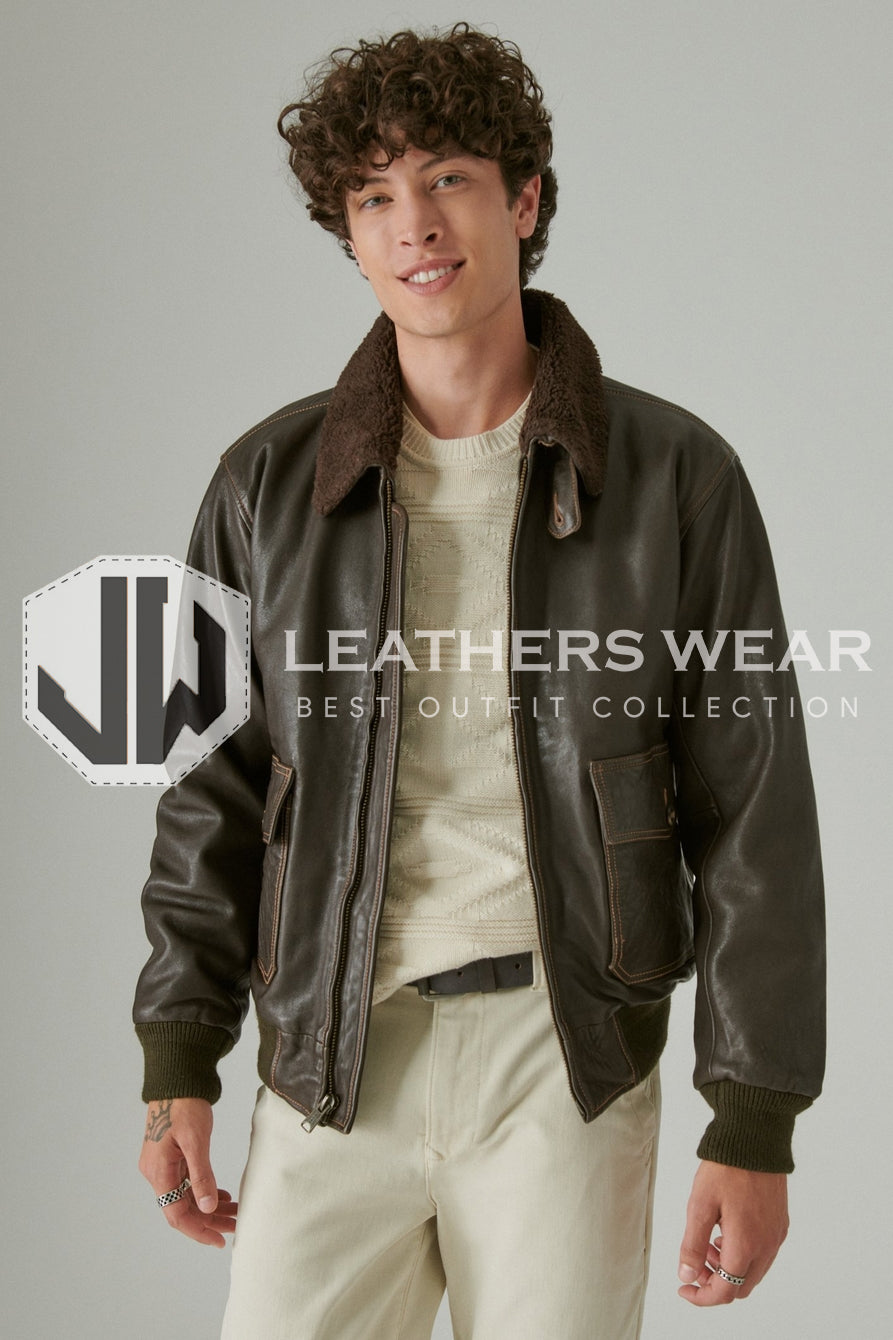
Are Flight Jackets Warm Enough for Winter?
Share
Flight jackets, also known as aviator or bomber jackets, are a classic staple in men’s and women’s wardrobes. Known for their sleek style and military heritage, they’re often associated with colder weather. But are they truly warm enough for winter? The answer depends on the jacket's design, materials, and how you layer it. Let’s dive into what makes a flight jacket winter-ready and how to maximize its warmth.
What Makes Flight Jackets Ideal for Cold Weather?
Flight jackets were originally designed for pilots flying at high altitudes, where temperatures dropped significantly. This history gives them a natural advantage for winter outerwear. Key features include:
- Insulation: Many flight jackets are lined with materials like shearling, quilted polyester, or fleece, providing excellent warmth.
- Durable Outer Shell: Leather or nylon exteriors are wind-resistant, helping to retain heat.
- Elastic Cuffs and Waistbands: These features seal out cold air and ensure a snug fit.
These elements make flight jackets a reliable option for chilly conditions.
Factors That Affect Winter Warmth
Not all flight jackets are created equal, and their warmth depends on the following factors:
- Lining Material: Shearling-lined flight jackets, like the iconic B-3 bomber, are ideal for freezing temperatures. Nylon or polyester linings are better suited for milder winters.
- Outer Material: Leather flight jackets offer better insulation than lightweight nylon or cotton.
- Fit and Length: A well-fitted jacket traps heat more effectively, while longer designs provide additional coverage.
Are Flight Jackets Suitable for Extreme Winter Conditions?
While flight jackets are excellent for most winter survival clothing days, they might not suffice in extreme cold without additional layering. In sub-zero temperatures, consider:
- Layering: Add thermal wear, a sweater, or a hoodie under the jacket for extra insulation.
- Accessories: Pair with a scarf, gloves, and a beanie to protect exposed areas.
- Weatherproofing: Opt for a flight jacket with water-resistant properties to shield against snow and rain.
For extreme conditions, heavy-duty parkas or down jackets may be more appropriate than traditional flight jackets.
How to Style Flight Jackets for Winter
Flight jackets are versatile and can be styled for both casual and semi-formal winter looks:
For Men:
- Pair a shearling-lined flight jacket with dark denim, boots, and a chunky knit sweater for a rugged, warm outfit.
- Style a nylon bomber with a hoodie, joggers, and sneakers for a casual streetwear vibe.
For Women:
- Combine a cropped flight jacket with high-waisted jeans, ankle boots, and a cozy scarf for a chic winter look.
- Layer a leather flight jacket over a turtleneck sweater and pair it with a midi skirt and tall boots for a polished ensemble.
The jacket’s timeless design ensures it complements a variety of outfits while keeping you warm.
Tips for Maximizing Warmth with a Flight Jacket
To get the most out of your flight jacket in winter, cold-weather tips:
- Layer Smartly: Start with thermal base layers, add a sweater, and finish with your jacket.
- Invest in Accessories: Scarves, gloves, and hats can make a significant difference in overall warmth.
- Choose Lined Jackets: Opt for shearling or quilted linings to retain heat better.
- Maintain Your Jacket: Keep leather jackets conditioned and nylon jackets waterproofed to enhance their weather resistance.
With these tips, your flight jacket can keep you stylish and warm all winter long.
Conclusion
So, are flight jackets warm enough for winter? Yes, especially when they feature insulating linings and durable materials. For milder winters, a standard flight jacket offers plenty of warmth and style. In harsher conditions, adding layers and accessories can help make this iconic piece suitable for even colder temperatures.
